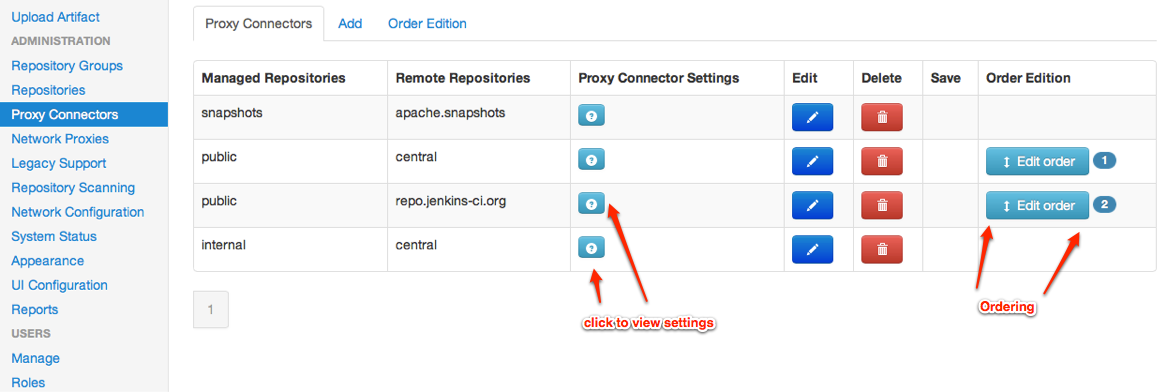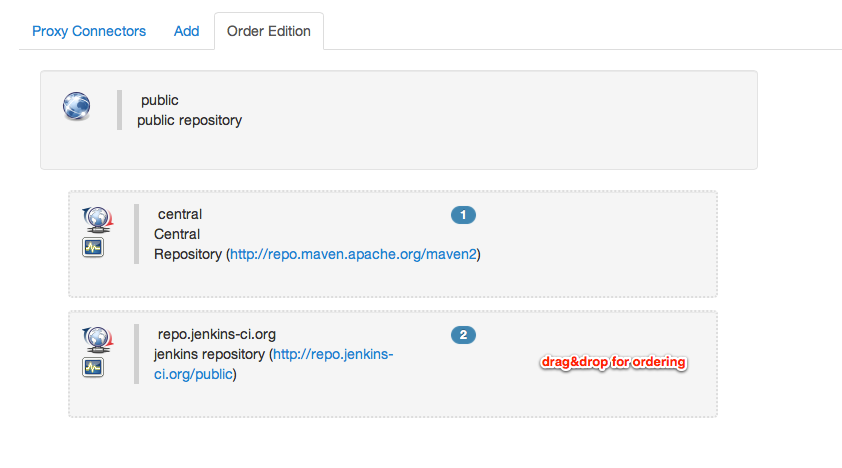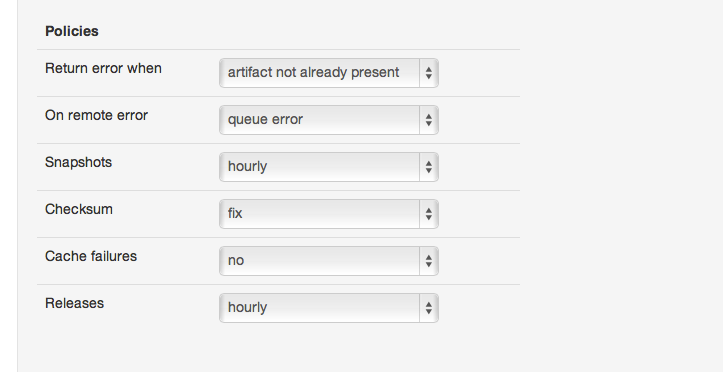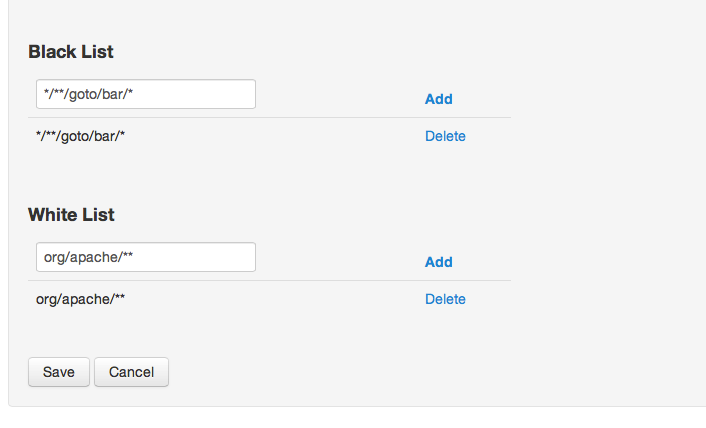Understanding Proxy Connector Configuration of Apache Archiva
Archiva uses the terminology "proxy" for two different concepts:
- The remote repository proxying cache, as configured through proxy connectors between repositories
- Network proxies, which are traditional protocol based proxies (primarily for HTTP access to remote repositories over a firewall)
A proxy connector is used to link a managed repository (stored on the Archiva machine) to a remote repository (accessed via a URL). This will mean that when a request is received by the managed repository, the connector is consulted to decide whether it should request the resource from the remote repository (and potentially cache the result locally for future requests).
Each managed repository can proxy multiple remote repositories to allow grouping of repositories through a single interface inside the Archiva instance. For instance, it is common to proxy all remote releases through a single repository for Archiva, as well as a single snapshot repository for all remote snapshot repositories.
A basic proxy connector configuration simply links the remote repository to the managed repository (with an optional network proxy for access through a firewall). However, the behaviour of different types of artifacts and paths can be specifically managed by the proxy connectors to make access to remote repositories more flexibly controlled.
Proxy Connectors
List of proxy connectors

Configuring order
You can configured repositories order using drag&drop

Configuring policies
When an artifact is requested from the managed repository and a proxy connector is configured, the policies for the connector are first consulted to decide whether to retrieve and cache the remote artifact or not. Which policies are applied depends on the type of artifact.
By default, Archiva comes with the following policies:
Releases- how to behave for released artifact metadata (those not carrying aSNAPSHOTversion). This can be set toalways(default),hourly,daily,onceandnever.Snapshots- how to behave for snapshot artifact metadata (those carrying aSNAPSHOTversion). This can be set toalways(default),hourly,daily,onceandnever.Checksum- how to handle incorrect checksums when downloading an artifact from the remote repository (ie, the checksum of the artifact does not match the corresponding detached checksum file). The options are to fail the request for the remote artifact, fix the checksum on the fly (default), or simply ignore the incorrect checksumCache failures- whether failures retrieving the remote artifact should be cached (to save network bandwidth for missing or bad artifacts), or uncached (default).Return error when- if a remote proxy causes an error, this option determines whether an existing artifact should be returned (error whenartifact not already present), or the error passed on regardless (always).On remote error- if a remote error is encountered,stopcauses the error to be returned immediately,queue errorwill return all errors after checking for other successful remote repositories first, andignorewill disregard ay errors.

Configuring whitelists and blacklists
By default, all artifact requests to the managed repository are proxied to the remote repository via the proxy connector if the policies pass. However, it can be more efficient to configure whitelists and blacklists for a given remote repository that match the expected artifacts to be retrieved.
If only a whitelist is configured, all requests not matching one of the whitelisted elements will be rejected. Conversely, if only a blacklist is configured, all requests not matching one of the blacklisted elements will be accepted (while those matching will be rejected). If both a whitelist and blacklist are defined, a path must be listed in the whitelist and not in the blacklist to be accepted - all other requests are rejected.
The path in the whitelist or blacklist is a repository path, and not an artifact path, and matches the request and format of the remote repository. The characters * and ** are wildcards, with * matching anything in the current path, while ** matches anything in the current path and deeper in the directory hierarchy.
For instance, to only retrieve artifacts in the Apache group ID from a repository, but no artifacts from the Maven group ID, you would configure the following:
- White list:
org/apache/** - Black list:
org/apache/maven/**




